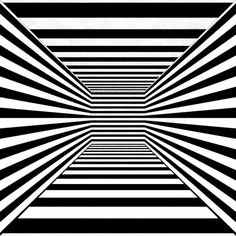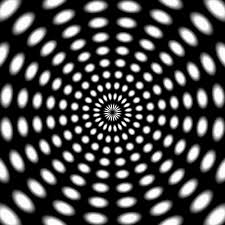|
LITR 4368 Literature of the Future |
Sample answers
for Essay 1:
|
 |
Laura Wilson
Diametrically in Sync
I’ve always considered myself a child of two worlds. On the one hand, my
generation is so intertwined with technology I don’t know how I’d do without it.
On the other I have an undying love for the “analog” things; actual books,
knitting, a good meal with friends (no phones). The two sides of my personality
have coexisted quite happily, so I was naturally interested when we began
looking at High Tech and Low Tech speculative fiction. I was interested in how
they coincided with one another. One is typically the more dominant scenario,
but it seems to me there is a little bit of Low Tech in even the most High Tech
stories, and vice versa. However, the more I read the more I began to notice
another correlation between the two scenarios. There is a kind of diametrically
synchronized scale of morality between High Tech and Low Tech; the more High
Tech a story the more that society seems to have abandoned its humanity, and the
more Low Tech scenarios showed a return to simple, moralistic life. I will
explore this idea by examining the short stories Johnny Mnemonic, Drapes and
Folds, Chocco, and House of Bones.
William Gibson’s stories are often a perfect example of future scenarios,
and Johnny Mnemonic is one that certainly fits the scale of high tech and
low humanity. High Tech is typically defined by aspects of virtual reality,
“computers as metaphors for human consciousness”, and the cyberpunk style of
“high tech and low life” (White). Johnny Mnemonic is a stellar example of
the cyberpunk style. Gibson introduces us to a world ruled by organizations like
the Yakuza, where humans get prosthetic implants to enhance their abilities or
give them weapons, and where the main character has deleted his own memories to
make room for Yakuza secrets. The language emphasizes the High Tech environment
and augmentations, as per the description Johnny gives of his memory storage
process, “The stored data are fed in through a modified series of microsurgical
contra-autism prostheses.” (Gibson 4.6). This story has very little Low Tech
elements, and thus very little in the way of a governing morality. The “Lo Tek”
people Johnny ends up with pride themselves on their low technological mini
society, yet they still get dental augmentation to create a “mask of total
bestiality” (Gibson 7.9). No doubt they intend it to be frightening, and indeed
most of the augmentation described are weapons, from Molly’s nails to the
assassin’s thumb, which indicates this is a very violent society with a “kill or
be killed” attitude. There is little place for taking a moral stance on
something, and thus this is the top of the scale, with next to no intersect with
the humanistic approach of the Low Tech tales.
The coexistence of the two is perhaps best explained in Audrey Ferber’s
Drapes and Folds. The society of Ferber’s story is most definitely High
Tech, with again human augmentations like Pearl’s “OrthoPed feet, and everyday
normalities like the TasteLik synthetic flavor system, and Xera, a “ghastly mix
of human and roboid” (Ferber 129). However, there is a distinct nostalgia and
reverence for the Low Tech former ways of life. Pearl’s love of fabric and cloth
is one example of this. She doesn’t want the “Bracie” suit, describing it as
“bodysuits favored by the Powers employed hydraulics to eliminate individual
morphs.” (Ferber 130), she craves the individuality and sensory connection of
actual clothing. Though perhaps the best example of Low Tech elements in
Drapes and Folds is the longing Pearl expresses to connect with her half
roboid granddaughter, Xera. The course term page for Low Tech explains it as
encouraging “biological human existence”, particularly family relations and the
organic over synthetic (White). Despite all the technological advancements
around her, Pearl yearned for Xera to call her “Gran”. This could be an
expression of regret that her daughter didn’t procreate the traditional
biological way, and thus Xera will never really be her grandchild. However,
given Pearl’s joy at hearing the word at last, “It warmed me like a flannel
gown” (Ferber 138), I think it is her hope for the future. Xera, the half human
half robot girl, becomes a symbol of hope that not everything she holds dear is
being taken from her, that she can retain her humanity. Low Tech values are the
underlying theme of this High Tech story, which shows how the two scenarios can
coexist and compliment one another for the benefit of the reader.
Chocco was one of my favorite stories we read this semester. I
loved the elements of Native American culture, and tradition of a storyteller
role mixed with vague hints of technology in the background. The return to a
tribalistic lifestyle reminded me of the video game Horizon: Zero Dawn.
Ernest Callenbach’s story is of how the Sun People chose a new Memory Keeper,
and the stories the two candidates told of the ancient “machine people”. It’s
clear there was some apocalyptic event called the “Die-Off” that brought down
these machine people, and lead to the decline of their High Tech society into
this very Low Tech, ritualistic one. The Sun People value knowledge, and
fellowship, particularly to learn from their history. The Memory Keeper
emphasizes this by saying “without reliable memories a people cannot find its
way into the future” (Callenbach 191). He also expresses approval of Jon for his
“remarkable empathetic powers” and “cautious thoughtfulness” (Callenbach 195,
205). Though a somewhat dystopian setting, the Sun People appear to have
progressed their society though an ability to adapt, and learning from the
mistakes of the past. Jon condemns the machine people as “clearly had not
grasped what it is to be truly human” (Callenbach 211), the implication being
they have advanced their humanity from the machine people, they they do still go
to war with neighboring tribes occasionally, which lowers the moral high ground
they stand on. While this story mainly mentions technology in a negative light,
there are hints they still utilize some, such as the indication of a water
system (Callenbach 213). The value for human experiences and simplistic living
make Chocco a calming example of a Low Tech ecotopia.
The world of House of Bones is the most primitive, technically
speaking, but it is also the one that displays the most “moral fiber”. The
narrator of Robert Silverberg’s ecotopic tale is a time traveller who get
stranded in the Paleolithic era. He gets taken in by a tribe, who send him out
to find a stranger who has been spotted. The narrator thinks they want him to
kill the stranger, and when he can't and brings the stranger in he discovers
that he underestimated their humanity, they had no intent for him to kill the
stranger. What is so interesting about this story is it introduces the idea that
High and Low Tech can be subjective. Our time traveler thinks himself advanced
with many skills applicable to his life in the future, but the tribe thinks he
is an idiot with no useful skills, “They feel sorry for me because I'm so
limited.” (Silverberg 92). What he would have once viewed as primitive is now
the most advanced technology he needs. If what is technologically advanced is
relative, then couldn’t we say the same for morals? Danny and B.J. killed
Sally’s previous husband, but what we would view as barbaric they saw as a
“mercy killing” as he had become plagued by ghosts (Silverberg 91). While on the
surface House of Bones is a very Low Tech ecotopia, it surprises the
reader by challenging not only what that means, but what constitutes as
humanity.
The four stories all depict four different takes on life in the future. They all feature High Tech and Low Tech elements, but all have a prominent scenario that takes center stage, and that scenario is what determines the value of humanity in the story. Johnny Mnemonic with it’s cyberpunk dystopia is very High Tech, yet values humanity and morals very little. Drapes and Folds is a hybrid; a Low Tech story in a High Tech world that challenges what it means to show humanity. Chocco and House of Bones are the examples of a Low Tech ecotopia, one following an apocalyptic event in the future and the latter in the past. Chocco is a harsh lesson on where the human race could end up, while House of Bones challenges the meaning of the words and terms discussed here. One person’s dystopia is another’s utopia after all. While I am interested in how the two scenarios of High and Low Tech intermingle, I find myself preferring the Low Tech stories. Perhaps my nostalgia and preference for a real sensory connection to things is what drives that, but also I think we can learn more as a society from these stories that infuse morality and humanity into their tellings than those that are cold and dark.




